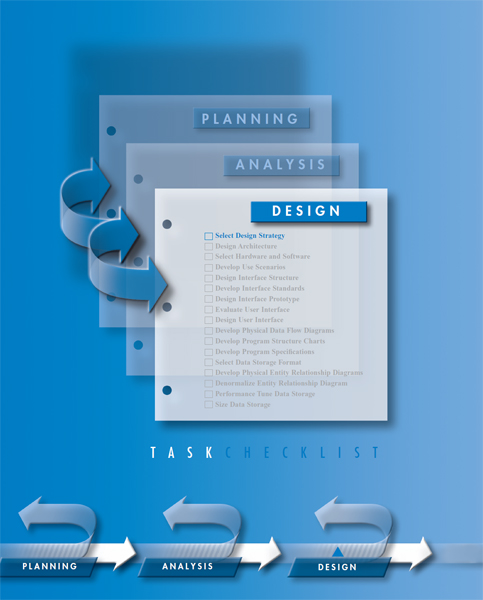
CHAPTER 7
MOVING INTO DESIGN
The design phase of the SDLC uses the requirements that were gathered during analysis to create a blueprint for the future system. A successful design builds on what was learned in earlier phases and leads to a smooth implementation by creating a clear, accurate plan of what needs to be done. This chapter describes the initial transition from analysis to design and presents three ways to accomplish the design for the new system.
OBJECTIVES
- Explain the initial transition from analysis to design.
- Create a system specification.
- Describe three ways to acquire a system: custom, packaged, and outsourced alternatives.
- Create an alternative matrix.
CHAPTER OUTLINE
Introduction
Transition from Requirements to Design
System Acquisition Strategies
- Custom Development
- Packaged Software
- Outsourcing
Influences on the Acquisition Strategy
- Business Need
- In-House Experience
- Project Skills
- Project Management
- Time Frame
Selecting an Acquisition Strategy
- Alternative Matrix
- Applying the Concepts at Tune Source
Summary
INTRODUCTION
The design phase decides how the new system will operate. Many activities will be involved as the development team develops the system requirements. This chapter provides an outline of those design phase activities, which culminates in the creation of the system specification. We also describe three alternative strategies for acquiring ...
Get System Analysis and Design, Fifth Edition now with the O’Reilly learning platform.
O’Reilly members experience books, live events, courses curated by job role, and more from O’Reilly and nearly 200 top publishers.

